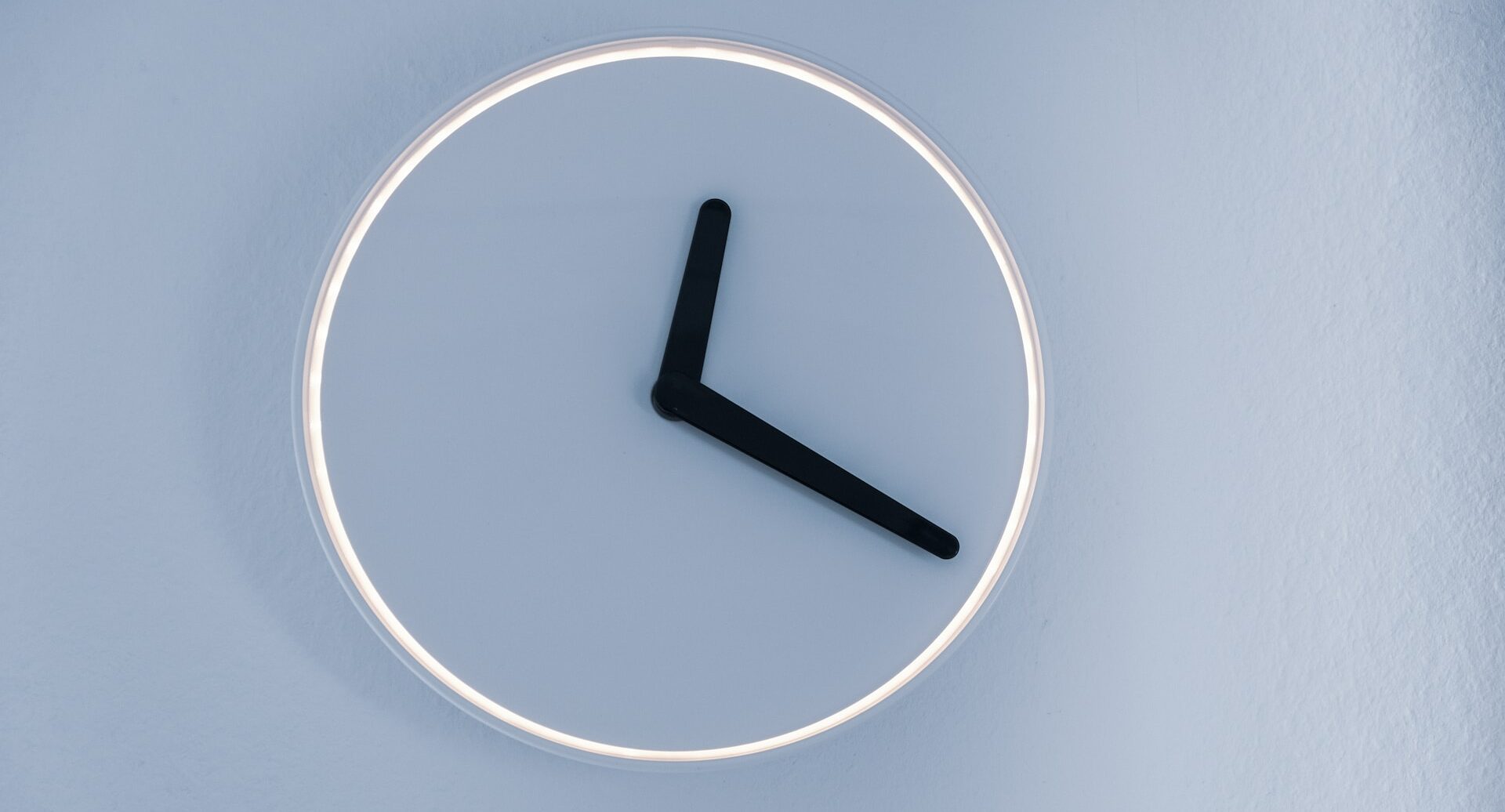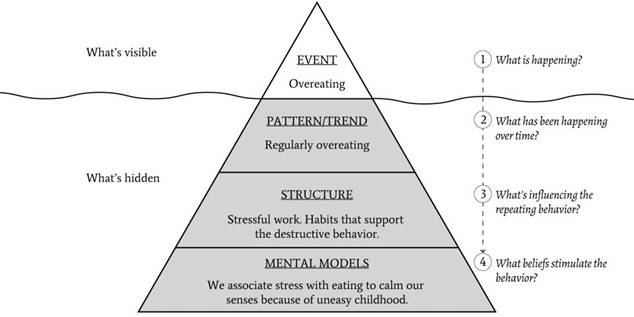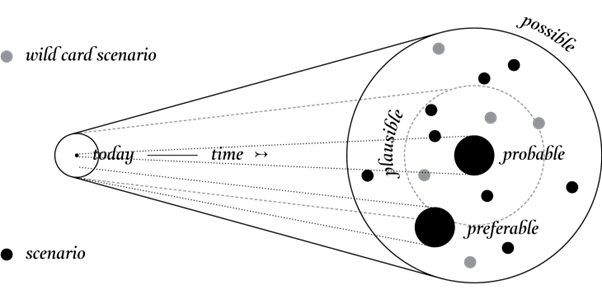Bringing your ideal future closer through design


We worked with a client on their five-year strategy. More importantly, we then worked backwards to see how we can work towards it starting today. In this post, we use this case study to explore design concepts like 'futures thinking' and 'backcasting', and how they can help us create the future we want.
Everything, everywhere, all at once
Two months ago, I attended the 2023 Transformations Conference in Sydney.
It brings together academics and practitioners from across the world who are dedicated to fostering sustainable, regenerative, and equitable futures. It was there that first nations poet and artist Nicole Smede introduced me to the concept of ‘everywhen’ in her welcome to country. ‘Everywhen’ is an indigenous concept of time, where the past, present, and future all live in the eternal ‘present’. All that has happened is happening and will continue to happen, held in the now.
I am far from a culture or lifestyle where everywhen is an embodied understanding of the world. We very much think and live in the present, with the past behind and the future yet to come. Nevertheless, this concept struck a chord with me as a designer. The role of a designer, in the most egregiously simple terms, is to put things in context and to try to make them better. It’s a continuous cycle of gathering pieces of the past and pockets of the future and bringing them to the present. Of building something from those pieces and trying again. The only future is the one that will naturally grow from all that we are doing now (and all that we’re not doing).
Confused? Let’s put this into context.
Futures thinking
In design frameworks, we use ‘futures thinking’ and ‘backcasting’ to guide our thought processes. Futures thinking is a holistic approach which involves gathering our knowledge in the present to anticipate and prepare for a variety of future outcomes. Understanding the events and forces that shape our world now and how they came to be can tell us about the future. We often do this when developing strategies: we make assessments about what may happen based on the patterns and behaviours we’re seeing now. Ultimately, strategies and designs that address likely predictions of the future can only go so far, mitigating risk or keeping up with trends. To define and create the future, we need to go deeper. Kind of like an iceberg!
The iceberg model is a way of representing the behaviour of people in complex systems. The way we see people behave is often just the tip of the iceberg, so to truly understand patterns of behaviour, we have to understand the structures that create them. Organisations, processes, laws, authority, education, and relationships are all structures that define the ways we act.

A company providing a service is one such complex system. You can analyse the behaviour of the people working in the company, the people buying from that company, and a wide network of stakeholders. For example, we recently worked with a mutual bank to better understand their members and why they join that particular bank. On the surface, all we see is the behaviour of becoming, or being, a bank member. But we dived deeper and interviewed current and prospective members. It was through these that we discovered that the reason for bank membership actually differed among groups of members. And it goes deeper.
The deepest level of the iceberg model, with the greatest influence over systems and structures that inform our behaviour, is mental models. The beliefs, assumptions, and values that people hold. These are the basis for our current way of understanding and acting in the world. For example, there’s the colonial understanding of time as a linear measurement, which we always move forward through, allowing us to create clocks and schedules and peak hour traffic. Our understanding of time is a deeply ingrained model by which we understand the world, but here’s a more contained example:
In 1968, American high jumper Dick Fosbury won the gold medal at the Olympic games, with a technique not practised by other competitors. Instead of jumping his face towards the bar as was the current practice, he jumped with his back towards the bar. This technique allowed him to lower his centre of mass and jump much higher than the competition. By the following Olympic games, the ‘Fosbury Flop’ became the dominant style for high jump competitors and continues to be to this day. By going against the conventional wisdom of the time and proving his method better, Fosbury changed people’s assumptions and, thereby, the sport.
Our work with the mutual bank found that mental models tended to be different for younger members than for older members. Through our interviews, we found that older members valued loyalty more highly. If they’d been with that bank for a while, loyalty was often the top reason for them to remain a member of that bank. For younger generations, however, loyalty was not as strongly valued. They just wanted better interest rates. If another bank were to provide lower rates, they would have no qualms switching over.
These insights at the lower levels of the iceberg then shaped the mutual banks’ strategy: To respect the value that their older members place on loyalty, the mutual decided to keep some of its branches open, despite the prevailing wisdom of modern banks all moving online. In that sense that this challenges a common mental model, keeping these branches open is a bit like the Fosbury flop in 1968.
Many futures
As there are many systems and beliefs that drive the world, there are many possible futures. Some values are more ingrained in culture, which makes those potential futures that are aligned with these values more likely. When futures thinking, we tell stories about what different possible futures may look like. From all the possibilities, we find one that aligns with how we want the world to be. Backcasting can then help us get there.

Together with our mutual banking client, we developed their five-year strategy. Where did they want to be in five years? We facilitated workshops with their people, in which they developed personas of their future members. For example, Amir is a member of this bank in the year 2028. What would Amir value? What would the ideal banking experience look like for Amir in 2028? And with all that defined, what can we do NOW to set ourselves up to meet Amir’s needs?
In answering those questions, we began the process of backcasting.
Backcasting is the process of working backwards to identify what needs to happen to achieve that ideal future. The technique works backwards through the necessary pathways, innovations, and interventions needed to reach a desired future. The bigger the change or the more complex the system, the more focus is needed on shifting the values of people within the system. Futures thinking and backcasting bring together past, present, and future, guide decision making, and anchor the planning process in values. Working through these methods ensures the chosen course of action remains true to the foundational beliefs and principles that are important to everyone involved.
With a five-year strategy and member experience that leaders, staff, and stakeholders were passionate about, we worked backwards to make it happen: how do we design the organisation to be able to deliver that experience for their members? This involved designing in terms of people and processes. What capability is there and what still needs to be learned? How can we support everyone along that journey to make it happen? Each step becoming more tangible and immediate. Each step bringing the ideal future, that five-year strategy, closer to the now.
So, with the iceberg model to better understand the past and present, with futures thinking to pick where we want to go, with and with backcasting to get us there, we’re well equipped to build great things together. Now.
Do you have a long-term vision you want to bring to life? Email us at hello@three6.com.au or contact us below!
